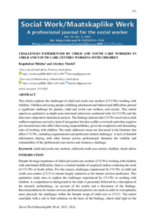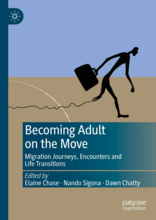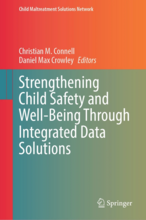Displaying 501 - 510 of 10391
This article explores the challenges of child and youth care workers (CYCWs) working with children in South Africa.
This edited collection situates the migration of children and young people into Europe within a global framework of analysis and provides a holistic perspective that encompasses cultural media, ethnographic research and policy analysis. Drawing on a unique study of young unaccompanied migrants who subsequently became ‘adult’ within the UK and Italy, it examines their different trajectories and how they were impacted by their ability to secure legal status.
This U.S.-based study analyzes data from a statewide kinship caregiver survey which collected demographic data, challenges, and needs.
Changing the Way We Care created two opportunities to promote learning and influence the practice of organizations and donors engaged in child protection and care in two demonstration countries: Kenya and Guatemala.
This article presents novel findings from interviews with 17 girls and young women and eight Youth Offending Team (YOT) staff, highlighting how being in care in the U.S. can affect offending behaviour and how YOTs may provide support to care-experienced girls who have been inadequately supported elsewhere.
This chapter summarizes results of a study of high service use, or “superutilization,” among children in foster care in the U.S. The study linked administrative data from child welfare, Medicaid, and other services for two sites.
This study examines how multiple factors from foster caregivers’ surrounding environments impact satisfaction and retention among 462 foster caregivers in the United States.
This study examined the extent to which Nigeria’s current disability and childhood policies have integrated the CRC and the CRPD frameworks. Using a structured search of databases and Nigerian federal and state government websites, we conducted a policy review to identify their disability and child-related disability policies.
This paper explores why the right to leave marriage matters, describes the obstacles to girls’ access to divorce and to protections after divorce or separation, and links these to the factors that drive child, early, and forced marriages and unions. The authors reviewed reports and evidence from countries in all regions of the world by drawing on a previous systematic scoping review and related research done by the authors.
In this article, the focus is on youth with minority backgrounds living in majority foster homes and their views on cultural continuity. What is important for these young people when developing their identity in foster homes? The study is based on qualitative interviews with nine adolescents from minority
backgrounds who live in majority foster homes, which are homes in which one or both foster parents have ethnic Norwegian backgrounds. The analysis was conducted using a hermeneutic phenomenology methodology and shows that youth do not necessarily want cultural continuity in the sense of living in a culturally “matched” foster home.








